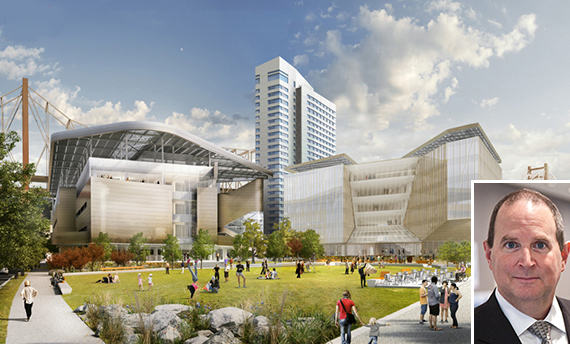Trending
Cornell Tech design is the anti- Columbia and Yale: architect
Narrowness of Roosevelt Island demanded a different layout

Cornell Tech, often touted for its ambitious, environmentally-conscious design, was originally going to be an entirely “net-zero” campus, meaning that — annually —it would produce as much energy as it consumed. But the plan was ultimately modified.
“Thank God, we got out our calculators and started pushing the buttons and realized just how difficult that would be,” Mark Regulinski, managing director of Skidmore Owings and Merrill’s New York and Washington, D.C., offices said at a panel Wednesday night. A spokesperson for the firm later clarified that Regulinski meant that the technology required to accomplish a net zero campus would have taken up too much space.
Instead, the first phase of the Roosevelt Island campus will feature one net-zero academic building and the tallest passive house high-rise in the world. Regulinski and Kimberly Garcia, associate director at SOM, presented an update on the project Thursday night at a panel held by Open House New York. SOM, the firm that designed One World Trade Center, is the master planner of the 12-acre campus. Garcia said the firm has a conceptual plan for phase two of the project.
Meanwhile, the first phase is under construction and is expected to be completed by the summer of 2017. In 2012, Cornell beat out Stanford University in a competition for the former Color-Goldwater Hospital and Nursing Facility on Roosevelt Island, donated by the city. The first housing complex — for students and faculty — will employ passive housing design, a method that can cut energy costs by 90 percent through intense insulation. Related Companies is developing the building, and Handel Architects is designing it. The first phase also includes an education center and hotel. The architect for that project hasn’t been officially announced, but The Real Deal reported in January that Norwegian firm Snøhetta submitted the winning bid.
When all three phases are completed — projected to be in 2043 — the campus will span 12 acres and have two million square feet of new buildings.
Regulinski said the design of the campus will be the “antithesis of Yale and Columbia” in that it doesn’t abide by the traditional “quad” format where buildings border a central public space. Because the island is long and narrow, the campus’ public spaces will instead border the outer edges of the property.
For a few years, the project has been billed as New York City’s answer to Silicon Valley’s booming tech industry and as a way to revitalize the sleepy East River island. The increased traffic to the island will likely put some strain on its limited transit options, which include the F train, tramway and bus. Regulinski said he is hopeful that if the project maintains a “successful course,” additional transportation options will be added — though he stressed that no plans are currently in the works. He said Roosevelt Island might not seem like the obvious prime location for a university but it could have transformative effects on the area.
“You don’t think of [the island] as the hotbed of innovation, but it has the spaces and the right price points where it can be,” he said. “You put a great university some place and out of that, the economic development will logically follow.”




